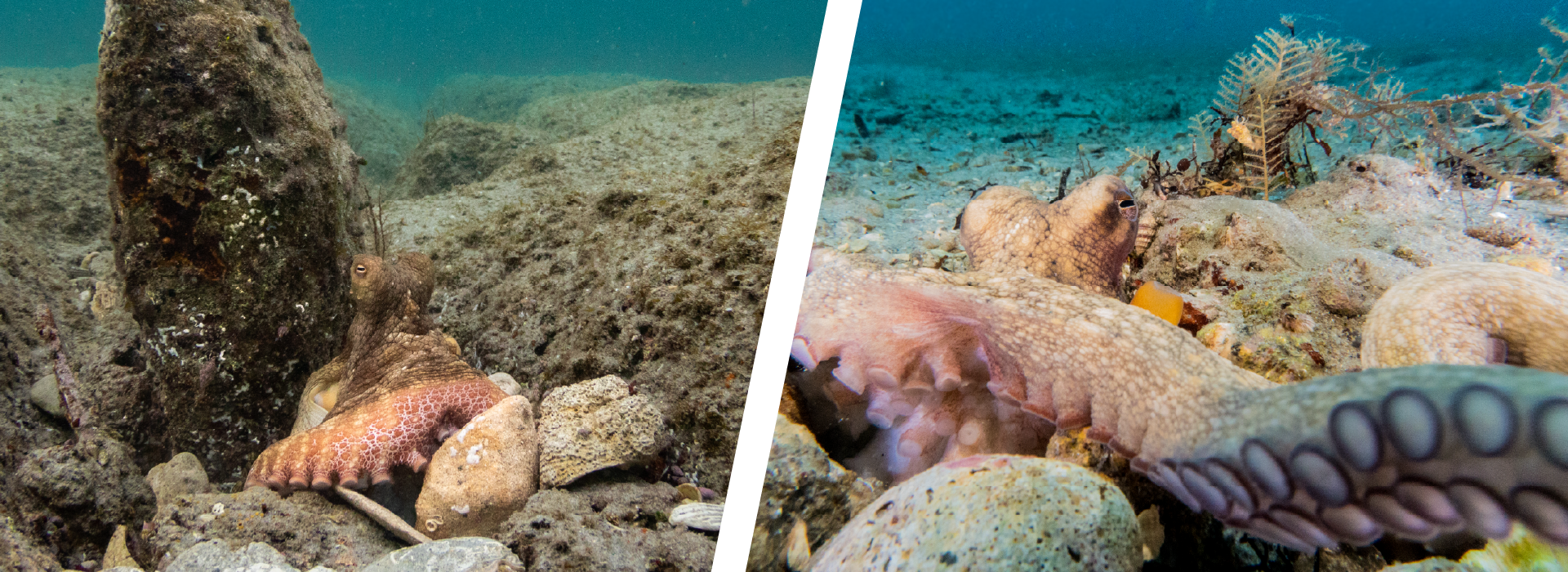1/31/2022
Welcome to Florida
FAU biologist discovers a species of octopus new to the Sunshine State
By Bethany Augliere
When local marine biologist Chelsea Bennice, Ph.D., set out to collaborate on a field guide to distinguish two species of octopus, she never expected to discover that Florida has an entirely new species, called the Brazil reef octopus (Octopus insularis).
Bennice, also known as OctoGirl, an affiliate assistant scientist, department of biological sciences in the Charles E. Schmidt College of Science, studies the native octopuses that live in South Florida. Now, she’s co-authored a new study, published in Zootaxa, describing where O. insularis has been found in South Florida and how to identify it from other local species.
“We were able to identify O. insularis in new northern areas and propose a range expansion for this species,” Bennice said. Being able to accurately identify a species is needed to understand a species population numbers, and therefore any conservation efforts for sustainable fisheries, she added.
O. insularis is a medium-sized octopus with a reddish-brown color, and a reticulate red-and-white pattern on the underside of its arms. It was first described in 2008 off the coast of Brazil and used to be mistaken as the same species as the common octopus (Octopus vulgaris, now known as Octopus americanus), until scientists realized it actually has different body color patterns, shape, habitat selection preference, as well as genetics.
A few years ago, a Brazilian researcher and co-author on the new study, asked Bennice if she had ever seen the Brazil octopus at her study site, based on some reports that their range was possibly larger than previously thought. At that time, Bennice hadn’t.
Years later, when the two scientists, along with a third, began to collaborate for the field guide, Bennice reached out to local scuba divers and photographers for photos of octopus in the region. “While sorting, I stopped and said wait a second that octopus has red/white reticulated arms. I immediately contacted the photographer and said where did you take this image? He replied, West Palm Beach.,” said Bennice. “Wow, Florida has a new species, this is Octopus insularis.” Those images were from 2014.
So far on record, Bennice has recorded five Brazil reef octopus in South Florida, including three of her own sightings while out snorkeling to find the cryptic creatures. “A picture says 1,000 words" may be an understatement now. Underwater photography and videography are providing invaluable information for scientific discovery, ocean conservation, and reinforcing the need for ocean exploration,” Bennice said.
This discovery highlights the importance of collaboration between the scientific community and local community, she said. “Without the help from underwater photographers, we would not have this information about this species. Now, scientists and marine enthusiasts can use this guide to better understand this species and monitor how this species will impact Florida's biodiversity and marine ecosystems.”
If you would like more information, please contact us at dorcommunications@fau.edu.
